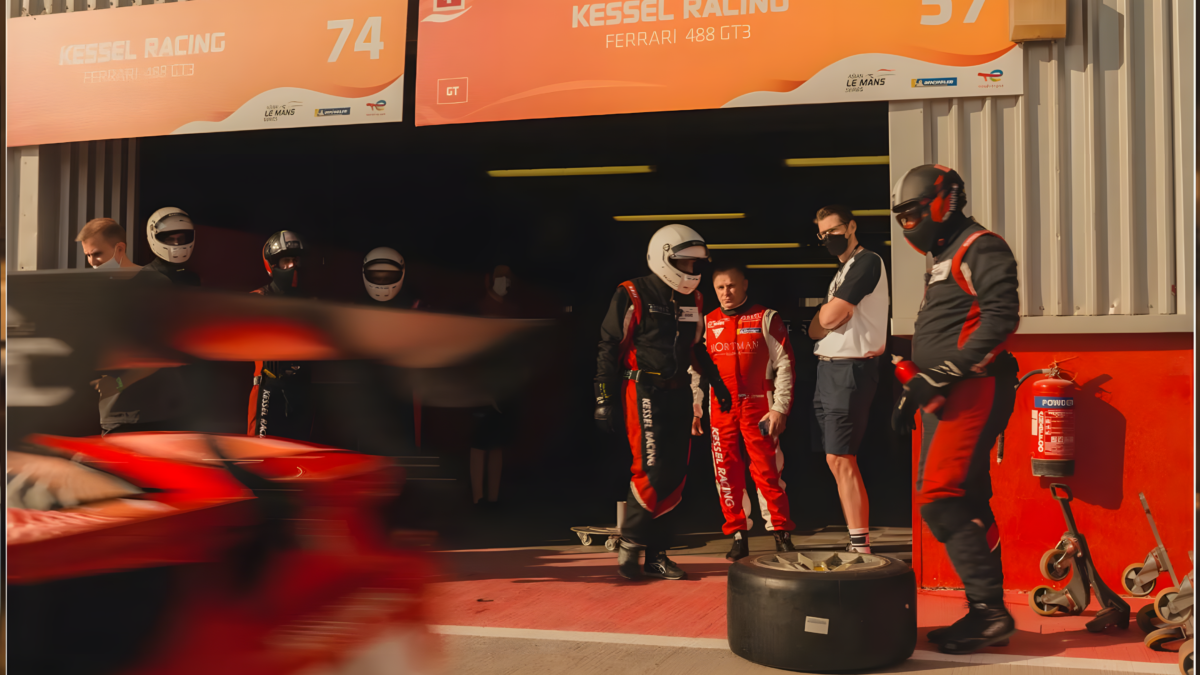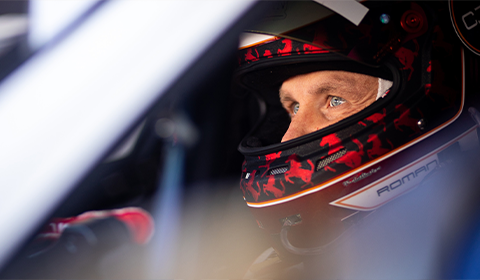
Behind the Ferrari Challenge: How Roman Ziemian Left His Legacy
June 18, 2025The GT4 European Series is widely regarded as one of the most competitive and accessible platforms for GT racing drivers who want to make a name for themselves on the European stage. This championship offers an excellent blend of high-level motorsport action and a relatively affordable entry point, making it a magnet for up-and-coming talents as well as experienced racers. Among those who have carved a niche in this series is Roman Ziemian, a driver whose journey exemplifies the dedication and skill required to thrive in GT4 racing.
This article aims to provide a detailed overview of the GT4 European Series, breaking down important aspects such as GT4 racing explained, the differences between GT4 vs GT3, and highlighting the role of GT4 European Series drivers, with a focus on GT4 racing Poland and the impact of drivers like Roman Ziemian GT4.
What is the GT4 European Series?
The GT4 European Series is a championship organized by SRO Motorsports Group, designed around racing production-based sports cars. Unlike GT3, which features highly modified and more powerful cars, GT4 cars are closer to their road-going versions but adapted with racing safety and performance enhancements.
This series showcases vehicles from a wide range of manufacturers such as Porsche, BMW, Mercedes-AMG, Audi, and Aston Martin. What makes the GT4 European Series especially appealing is the Balance of Performance (BoP) system, which ensures all cars, despite their different designs and engines, compete on a roughly equal performance level.
The BoP adjusts parameters such as weight, engine power, and aerodynamics, so the racing emphasizes driver skill, strategy, and teamwork rather than pure horsepower advantages. This level playing field is a cornerstone of what makes the GT4 European Series both thrilling and fair.
GT4 Racing Explained: Understanding the Basics
To fully appreciate the appeal of the GT4 European Series, it is important to understand what GT4 racing explained entails. GT4 racing features cars that strike a balance between high performance and accessibility.
These vehicles are equipped with safety features such as roll cages, racing seats, and fire suppression systems, meeting stringent regulations. Performance-wise, the cars have moderate horsepower, typically in the range of 400 to 450 hp, and modest aerodynamic modifications to maintain driving stability.
Race formats in the GT4 European Series are usually sprint races lasting around one hour. Drivers compete either solo or in two-driver teams, sharing driving duties during pit stops. This format promotes intense, tactical racing, requiring drivers to manage tires and fuel carefully while pushing for optimal lap times.
GT4 vs GT3: What’s the Difference?
The debate between GT4 vs GT3 is common among fans and newcomers to GT racing. Both classes offer different experiences, purposes, and technical setups.
GT3 cars are highly modified, featuring powerful engines exceeding 550 horsepower, advanced aerodynamic kits, and complex electronic systems such as traction control and ABS. These cars are designed for top-tier professional racing, often supported by manufacturers and factory teams.
In contrast, GT4 cars maintain much of their production-based characteristics, with less power and simpler aero. The lower running costs and equalizing BoP system make the GT4 European Series a perfect ground for young drivers or gentleman racers who want to develop their skills or enjoy competitive racing without massive budgets.
Thus, the GT4 European Series serves as a critical stepping stone for many drivers aspiring to reach GT3 or even prototype racing.
Roman Ziemian’s Journey in the GT4 European Series
Among the rising stars in the GT4 European Series is Roman Ziemian GT4 a talented driver from Poland. His motorsport career began in karting and national touring car championships, providing him with a strong foundation in racing fundamentals.
Transitioning into GT4 racing, Ziemian quickly adapted to the unique challenges presented by endurance-style sprint races, teamwork, and car setup. He developed an ability to consistently perform strong qualifying sessions and execute strategic races, which led to multiple podium finishes.
Ziemian’s path reflects the typical trajectory of many drivers in the GT4 European Series: combining natural talent with technical knowledge, physical fitness, and mental toughness. His successes have helped raise the profile of GT4 racing Poland, inspiring young drivers in the region to pursue international motorsport careers.
The Role of Driver Development in the GT4 European Series
The GT4 European Series is renowned not only for its racing but also as a crucial platform for driver development. It allows drivers to:
- Gain experience on iconic circuits such as Spa-Francorchamps, Monza, and the Nürburgring.
- Learn racecraft involving tire management, fuel strategy, and driver changes.
- Work with professional teams and engineers to optimize car setup and performance.
- Compete against a highly competitive field of international GT4 European Series drivers.
For drivers like Roman Ziemian GT4, this environment helps sharpen skills necessary for advancement in motorsport, including communication, adaptability, and strategic thinking.
The Expansion of GT4 Racing Poland
GT4 racing Poland has witnessed significant growth recently, fueled by the rising popularity of the GT4 European Series and the increasing involvement of Polish drivers and teams.
This expansion has been supported by several factors:
- Enhanced racing infrastructure and circuits within Poland.
- Greater availability of GT4 cars and professional teams.
- Increased sponsorship and media attention.
- The success of drivers like Roman Ziemian, who serve as role models.
These elements contribute to a thriving motorsport culture in Poland, encouraging more drivers to compete internationally and strengthening the country’s presence in the global GT4 racing community.
Technical Features That Define GT4 Cars
The technical specifications of GT4 cars strike a balance between road car familiarity and race-ready performance:
- The chassis remains largely production-based, with safety reinforcements such as roll cages.
- Engines typically deliver 400 to 450 horsepower, ensuring exciting but manageable speed.
- Aerodynamics are designed to provide stability without overwhelming downforce, differentiating GT4 from more aggressive GT3 cars.
- Tires and brakes are race-specific, requiring skillful management to optimize performance during races.
- The Balance of Performance system plays a critical role in ensuring parity across various car makes and models.
This combination creates an environment where driver talent shines, and races remain closely contested.
The Strategic Challenges of GT4 Racing
Success in the GT4 European Series goes beyond raw speed. Drivers and teams must navigate complex strategic elements such as:
- Efficient pit stops and driver changes.
- Tire degradation and management.
- Fuel consumption and race pace.
- Adapting to weather and track conditions.
These factors add depth to the competition, requiring drivers like Roman Ziemian to be not just fast but tactically astute and adaptable.
International Influence and Opportunities
The GT4 European Series is truly an international championship. Drivers from many countries participate, creating a melting pot of talent and styles.
For drivers from countries like Poland, participation in the series opens doors to:
- Networking with international teams and sponsors.
- Exposure to a broad fan base and media coverage.
- Potential progression into higher levels of motorsport, such as GT3, endurance racing, or even Formula racing.
This global platform underscores the importance of the GT4 European Series in developing future motorsport stars.



